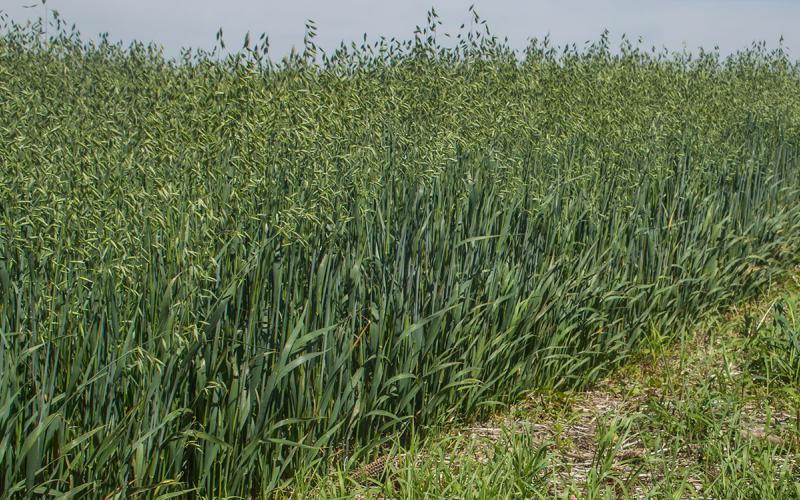Written with contributions by Dalitso Yabwalo and Emmanuel Byamukama.
Summary
An oat crown rust integrated management trial and a sorghum foliar fungicide trials were conducted to determine the efficacy of fungicides to manage crown rust and fungal diseases in oat and sorghum respectively. Crown rust is one of the most devastating diseases of oat in the state. Stragego fungicide was applied at three different timings to determine the most effective timing for crown rust management. For sorghum, the study investigated the efficacy of two different rates of Nexicor for managing sorghum foliar diseases. The oat field experiment was maintained at Northeast Research Farm (NERF), Southeast research farm (SERF) and Volga research farm. The sorghum experiment was at Volga.
Treatments for the crown rust included application of Stratego fungicide at flag leaf, after heading (within 4 days of heading), and application when significant crown rust was developing on lower leaves preceding scouting, a strategy referred to as integrated disease management (IDM). Due to unfavorable weather conditions, crown rust appeared post maturity at Southeast research farm suggesting that the impact on yield was insignificant. Therefore, results from SERF are not presented. At Volga and NERF, crown rust occurred when the crop was at about flag leaf. As a result, IDM and flag leaf applications were carried out either on the same day or within a couple of days apart. Generally, crown rust incidence and severity were moderate with slightly higher intensities at Volga than at NERF. Both the fungicide and cultivar were significant in reducing crown rust severity with the resistant cultivar registering the lowest crown rust severity while flag leaf and IDM timings had generally better disease suppressions and higher grain yield.
The sorghum trial had low disease pressure due to unfavorable weather conditions and this led to lack of statistically significant differences among treatments. Considering that the area has very few sorghum fields, it is possible that natural inoculum for sorghum diseases is consequently low. Nevertheless, if fungicides are to be used, growers are reminded to scout and apply the appropriate product, using the recommended application rate to effectively manage grain sorghum foliar diseases.
Acknowledgement
These field studies were implemented with assistance from personnel from various programs in the department of Agronomy, Horticulture and Plant Science at SDSU. Some of the programs that offered collaboration include: Spring Wheat Breeding, Oat Breeding, Entomology, SERF, NERF and Volga research farms.

